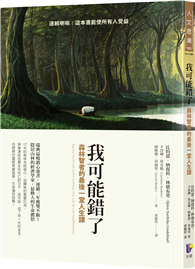她的本名是海莉耶塔.拉克斯,但科學家都稱呼她「海拉」(HeLa)。
她是美國南方的貧窮菸農,罹患子宮頸癌後,腫瘤細胞被醫師取走,成為醫學史上最早經由人工培養而「長生不死」的細胞,她卻不知情。
海拉細胞是研發小兒痲痺疫苗的功臣,協助科學家解開癌症、病毒和原子彈效應的奧祕,促成試管嬰兒、基因複製、基因圖譜的重要發展,並造就了總值超過幾十億美元的人體生物材料產業。現在海拉細胞依然持續繁衍,總重量相當於100座帝國大廈。
然而這60年來,海莉耶塔埋在毫不起眼的墓地裡,沒沒無聞。她的家人沒有享受到細胞帶來的利益,甚至在她死後20多年才驚覺她的「永生不死」。她的女兒得知母親細胞的事,心中哀痛欲絕、充滿疑問:科學家算不算一直複製她母親?拿母親的細胞做實驗,她感覺得到嗎?既然她母親對現代醫學如此重要,她的兒女怎麼會付不起健康保險費用?
作者史克魯特耗費十多年挖掘這段精彩歷史,記述拉克斯一家從震驚、憤怒到驕傲的動人歷程,也討論人體實驗的黑暗過去、醫學研究倫理的興起,以及身體組織所有權的法律問題。本書情感觸動人心、格局宏偉,細膩捕捉科學發現的高潮迭起,以及對人類的深邃影響。
Her name was Henrietta Lacks, but scientists know her as HeLa. She was a poor Southern tobacco farmer who worked the same land as her slave ancestors, yet her cells—taken without her knowledge—became one of the most important tools in medicine. The first ”immortal” human cells grown in culture, they are still alive today, though she has been dead for more than sixty years. If you could pile all HeLa cells ever grown onto a scale, they’d weigh more than 50 million metric tons—as much as a hundred Empire State Buildings. HeLa cells were vital for developing the polio vaccine; uncovered secrets of cancer, viruses, and the atom bomb’s effects; helped lead to important advances like in vitro fertilization, cloning, and gene mapping; and have been bought and sold by the billions.
Yet Henrietta Lacks remains virtually unknown, buried in an unmarked grave.
Now Rebecca Skloot takes us on an extraordinary journey, from the “colored” ward of Johns Hopkins Hospital in the 1950s to stark white laboratories with freezers full of HeLa cells; from Henrietta’s small, dying hometown of Clover, Virginia—a land of wooden slave quarters, faith healings, and voodoo—to East Baltimore today, where her children and grandchildren live and struggle with the legacy of her cells.
Henrietta’s family did not learn of her “immortality” until more than twenty years after her death, when scientists investigating HeLa began using her husband and children in research without informed consent. And though the cells had launched a multimillion-dollar industry that sells human biological materials, her family never saw any of the profits. As Rebecca Skloot so brilliantly shows, the story of the Lacks family—past and present—is inextricably connected to the dark history of experimentation on African Americans, the birth of bioethics, and the legal battles over whether we control the stuff we are made of.
Over the decade it took to uncover this story, Rebecca became enmeshed in the lives of the Lacks family—especially Henrietta’s daughter Deborah, who was devastated to learn about her mother’s cells. She was consumed with questions: Had scientists cloned her mother? Did it hurt her when researchers infected her cells with viruses and shot them into space? What happened to her sister, Elsie, who died in a mental institution at the age of fifteen? And if her mother was so important to medicine, why couldn’t her children afford health insurance?
Intimate in feeling, astonishing in scope, and impossible to put down, The Immortal Life of Henrietta Lacks captures the beauty and drama of scientific discovery, as well as its human consequences. he finds is that in a world of real crime, and real evil, the world does not need Arthur Conan Doyle - the world needs Sherlock Holmes.
★本書中譯版《海拉細胞的不死傳奇》由遠流出版。
作者簡介
芮貝卡.史克魯特(Rebecca Skloot)
是得獎的科學作家,作品散見《紐約時報雜誌》、《歐普拉雜誌》、《發現》、《預防》、《魅力》等雜誌,曾任職美國公共廣播電台《電台實驗室》(Radiolab)和美國公共電視網《新星今日科學》(NOVA ScienceNOW)節目的記者,也是《大眾科學》雜誌的特約編輯。她的作品曾收錄在數本選集中,包括《最佳飲食寫作》(The Best Food Writin)和《最具創意非小說》(The Best Creative Nonfiction)。
史克魯特曾任美國國家書評會(National Book Critics Circle)副主席,在曼菲斯大學和匹茲堡大學開設非小說類的創意寫作課程,也在紐約大學教科學新聞寫作。《海拉細胞的不死傳奇》是她的第一本書,出版後旋即成為紐約時報暢銷書。她目前住在芝加哥。更多介紹請見她的網站:RebeccaSkloot.com。
REBECCA SKLOOT is a science writer whose articles have appeared in The New York Times Magazine; O, The Oprah Magazine; Discover; Prevention; Glamour; and others. She has worked as a correspondent for NPR’s Radio Lab and PBS’s NOVA scienceNow, and is a contributing editor at Popular Science magazine. Her work has been anthologized in several collections, including The Best Food Writing and The Best Creative Nonfiction.












